The line of modern pressure chambers BKD
In 2014, fifteen BKD-120T pressure chambers were made and delivered to customers as part of various types of diving complexes.
It should be noted that the pressure chamber can be supplied in two versions: with a certificate of conformity of the Technical Regulations of the Customs Union (hereinafter TC TR) or with the certificate of the Russian Maritime Register of Shipping (hereinafter RS).
Package of the pressure chamber, i.e. saturation with various systems and equipment, differentiated depending on the requirements of the Customer. At the same time, regardless of the configuration, BKD provides the necessary degree of safety during diving operations and the possibility of upgrading during operation at the request of the Customer.
Upon the completion of the development, production and mastering of serial production of pressure chambers of the BKD-120T series, it was decided to continue the development work (R & D) aimed at creating a line of pressure chambers of various sizes. So in April 2015 of the year were manufactured diving pressure chambers BKD-1000T (internal diameter 1000 mm) and BCD-1600T (internal diameter 1600 mm). New pressure chambers also meet all modern safety requirements and have a certificate of TR CU.
The CU TR certificate is a new authorization document, replacing previously issued by the Federal Service for Technological, Environmental and Atomic Supervision with the use of the product. Today, the pressure chambers produced by Tethis Pro are the only ones in Russia that are certified in accordance with the CU TR. This allows the delivery of pressure chambers, both separately and as part of various diving complexes in the Russian Federation, the countries participating in the Customs Union, as well as countries that will become members of the union during the certificate validity period.
Development and manufacture of pressure chambers - hard and responsible work, behind which there is a whole staff of specialists: designers, technologists, welders, painters, fitters, electricians ... And each of these specialists is personally responsible for the product being manufactured, ensuring safety during diving works and , ultimately, for the life and health of divers. Each pressure chamber of its own size has its own individual characteristics, which are taken into account in the design and further manufacture. Of course, the experts reading this article understand that the smaller the diameter of the pressure chamber, the more difficult its project. After all, it is necessary with a small diameter not only to meet the requirements for safety and ergonomics, but also to saturate the pressure chamber with all the elements of life support systems. And when designing pressure chambers with a diameter of 1600 mm, there is an opportunity to place maximum emphasis on ergonomic indicators and freely place the elements of life support systems.
It is worth noting that the Tetis Pro specialists carried out serious work in the field of safety equipment for pressure chambers. Including hatch supports were developed using sparkless materials, electrical connectors were selected, providing more than 100% a guarantee for protection against electric shock. All electrical equipment that is inside the pressure chamber has a safe voltage - 24 B, and a special non-toxic paint is also selected. Mattresses and pillows are made of special non-combustible and non-burning materials.
The same applies to the placement of external control systems for the pressure chamber operation - gas supply consoles for the pressure chamber, elements of the power supply system, water fire extinguishing system and others. All systems have an intuitive interface and are easy to manage. In the design and manufacture of pressure chambers of the BCD series, all the recommendations and wishes of the professional community were taken into account. And we hope that the pressure chambers will be appreciated by divers.
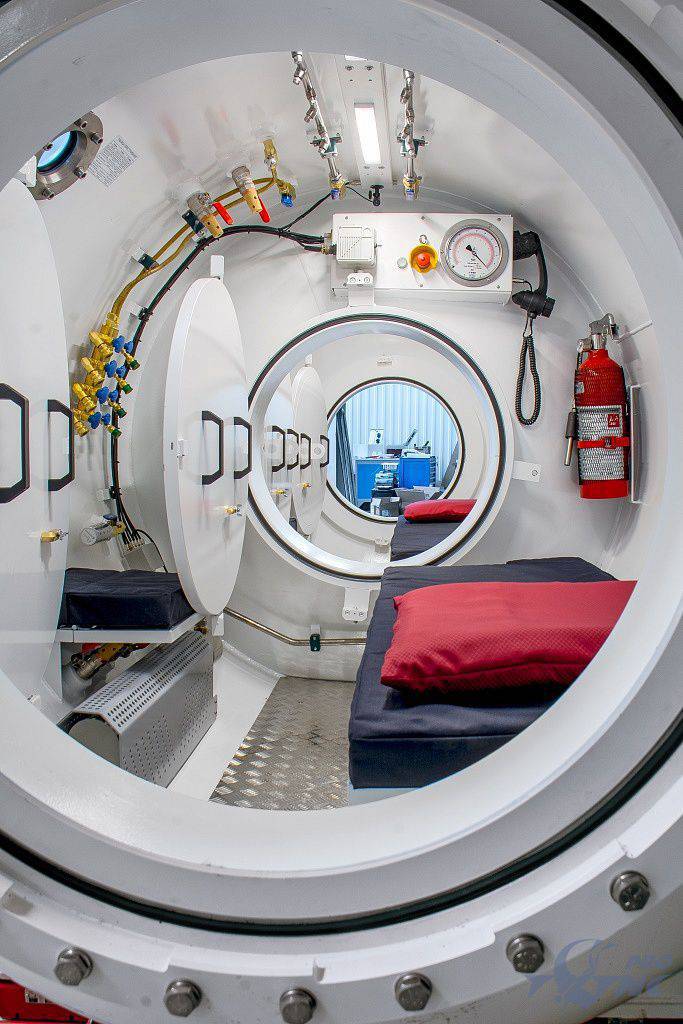
One of the latest developments is the two-compartment in-line decompression pressure chamber BKD-1600T. The chamber contains two inlet and two transitional hatches with a diameter of 700 mm, two medical gateways for the transfer of food, medicines, etc. (one for each compartment) and two safety devices to ensure safety under the condition that the pressure inside the pressure chamber increases above working . Each compartment, depending on the task, can perform the function of the main or airlock compartments, that is, the prechambers. The pressure chamber can be equipped with a modern water fire extinguishing system, which is installed outside and includes two water tanks for supplying water to each compartment, fluid supply, control and monitoring systems. Inside the pressure chamber are mounted pipelines with nozzles for spraying water. Activation of the water extinguishing system can be carried out from inside the pressure chamber, from the pressure chamber control panel and from the water extinguishing system control panel.
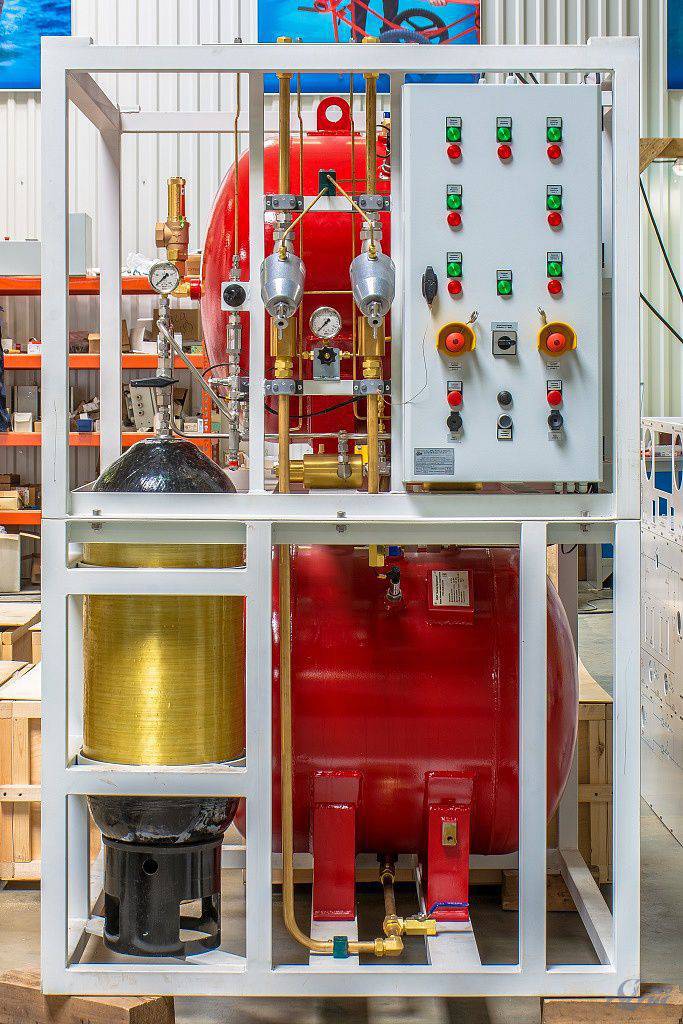
In pressure chambers with a diameter of 1200 and 1600, a flange according to DIN13256 standard is provided for connecting a transportable pressure chamber at a pressure of no more than 5,5 kgf / cm2. In addition, with the BKD-1600T pressure chamber, the docking flange can be installed on either of the access hatches or on both hatches.
Pressure chambers of the BKD series:
Designed to ensure the safety of work and descents carried out under excessive pressure of the external environment, as well as for the treatment of specific diseases associated with the work of divers, divers, coffered workers and people affected by natural and man-made accidents;
Can be installed on ships or vessels as part of ship diving complexes, on vehicles as part of container diving complexes, as well as in the stationary version.
The entire line of BKD pressure chambers was presented at the International Navy Salon (IMDS-2015), which ran from 1 to 5 in July 2015, in St. Petersburg, on the territory of the VC “Lenexpo”.
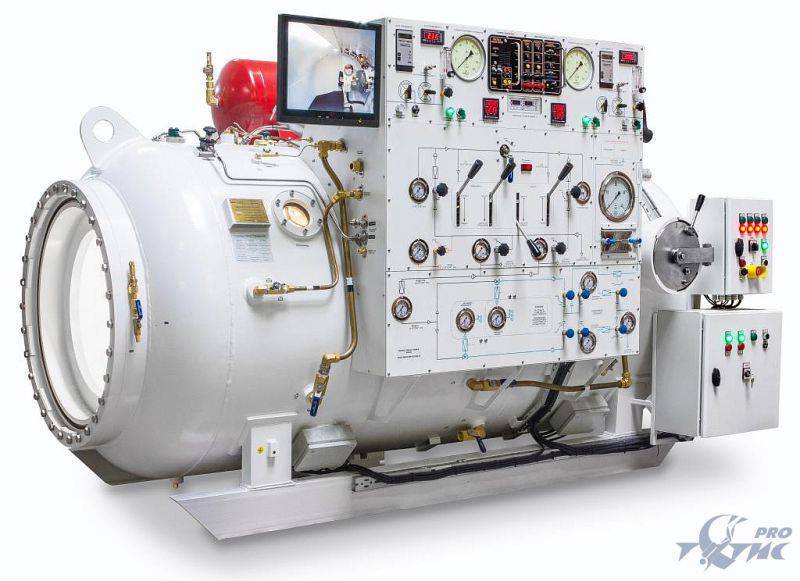
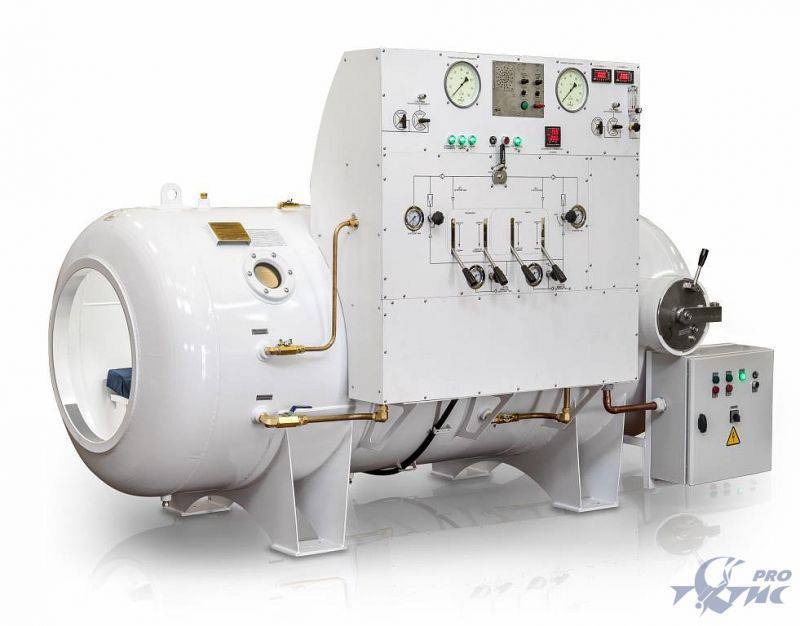
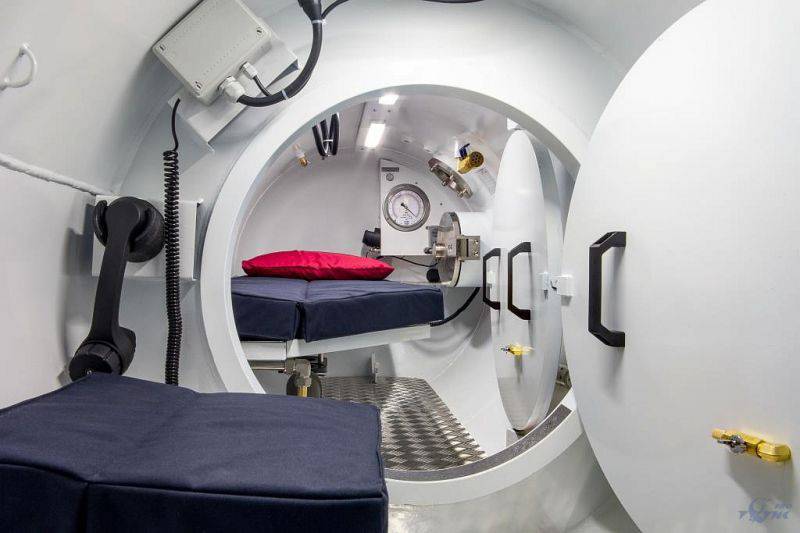
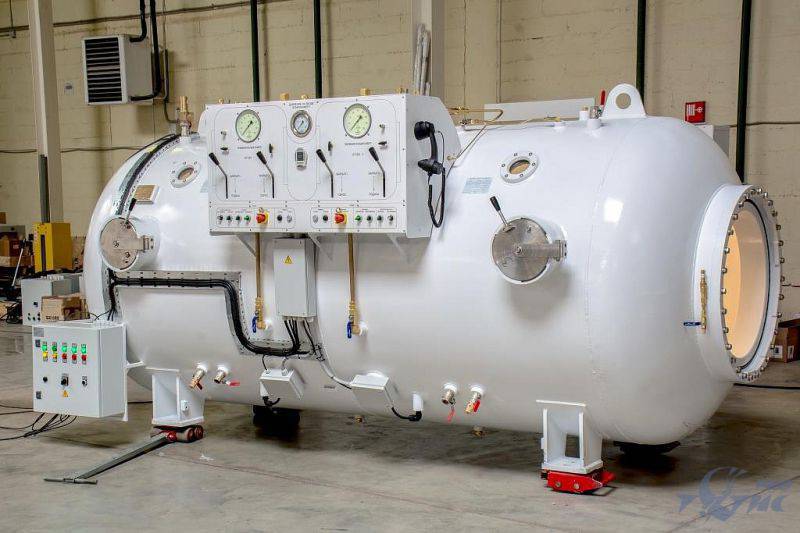
Information